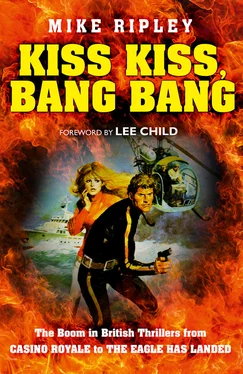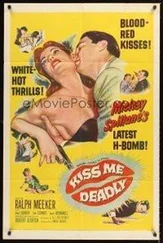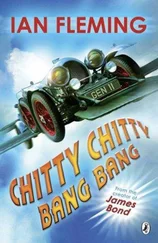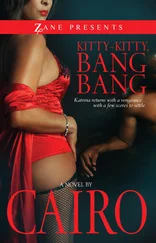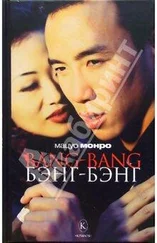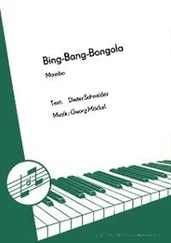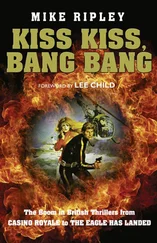Chapter 1:
A QUESTION OF EMPHASIS
You can smell fear. You can smell it and you can see it and I could do both as I hauled my way into the control centre of the Dolphin that morning. Not one man as much as flickered an eye in my direction … they had eyes for one thing only – the plummeting needle on the depth gauge.
Seven hundred feet. Seven hundred and fifty. Eight hundred. I’d never heard of a submarine that had reached that depth and lived.
Alistair MacLean, Ice Station Zebra
Was it a Golden Age or an explosion of ‘kiss-kiss, bang-bang’ pulp fiction which reflected the social revolution – and some would say declining morals – of the period? Both are reasonable explanations, depending on your standpoint, for the extraordinary growth in both the writing and reading of British thrillers, between 1953 and 1975.
Popular fiction, as opposed to literary or ‘highbrow’ fiction was always, well – popular; but suddenly the thriller seemed to be out-gunning all other forms. Writing in the middle of the Swinging Sixties, in his economic history Industry and Empire , the Marxist historian Eric Hobsbawm noted that since 1945, ‘that powerful cultural export, the British detective story, has lost its hold, conquered by the American-patterned thriller.’ Professor Hobsbawm was certainly correct in that the traditional British detective story had been replaced by the thriller as a cultural, and in fact economically valuable, export but wrong in suggesting they were ‘American-patterned’. This was a very British boom.
The British, or probably more accurately the English detective story had flourished in the period, roughly, between the two World Wars, a period which earned the epithet ‘Golden Age’ and was characterized, often unfairly, as the era of ‘the country house murder mystery’ or the ‘whodunit?’ It had given rise to the concept of ‘fair play’ whereby the reader was presented with clues to solving the puzzle presented, ideally before the fictional detective did, and the puzzle element was very important. There were even ‘rules’ (fairly tongue-in-cheek ones) on what was and was not allowed in a detective story, and a self-selecting, totally unofficial, Detection Club of the leading practitioners of the art to set the standards of good writing – or just standards in general.
After WWII tastes changed and readers began to demand something other than an intellectual puzzle. Cynics may say that the launch of the board game Cluedo in 1949 was an ironic final nail in the coffin of the ‘whodunit?’ – all those fictional cardboard characters being reduced to actual pieces of cardboard. Of course, it wasn’t the end; it was a period of cyclical dip and transition. Readers were looking for exotic settings, not country houses; indeed, thanks to death duties and wartime requisitioning by the government or military (most famously of Bletchley Park), there were fewer of them to go round. The fashion was for heroes and heroines who often acted outside the law rather than plodding policemen; suspense rather than a puzzle; more realistic violence rather than a ridiculously over-elaborate murder method; and, above all, action and excitement at a time when, in the Sixties, everything seemed exciting and moved much faster.
For a period of more than two decades the British thriller delivered on all counts, and on a truly international level. It may not have been a Golden Age but it was certainly a boom time.
This is not a work of literary criticism or comparative literature; it is a reader’s history of one specific category, or genre, of popular fiction – the thriller – over a particular period when British writers dominated the bestseller lists at home and abroad. There will be little, if any, discussion of heroic mythology, social individualism, the atemporality of the appeal of the thriller, the symbiotic relationship between hero and conspiracy, or genre theory. Those debates are left to others on the grounds that, to paraphrase E. B. White: dissecting a thriller is like dissecting a frog – few people are really interested and the frog dies. 1
But there has to be some attempt to define the term ‘thriller’, a term used as loosely in the past as ‘noir’ is today (‘Tartan Noir’, ‘Scandi Noir’, etc.) to describe an important segment of that exotic fruit which is generally known as crime fiction. Whether it matters a jot to the reader who simply wants to be entertained is debatable, but again, it probably does. Crime fiction is a recognised genre, just as horror, science fiction, romance, fantasy, westerns and supernatural are all genres of popular fiction and genres tend to have dedicated followers.
The idea of genre fiction evolved in the late nineteenth century and blossomed in the Thirties with the advent of cheaper, paperback books with crime fiction among the first instantly identifiable genres thanks to the famous green covers used by Penguins and logos such as the Collins Crime Club’s ‘gunman’. Dedicated readers were steered to genres they liked and genre readers appreciated the guidance – though they did not want to read the same book again, they did want more of the same.
Within a genre as big as crime fiction, which could be described as a broad church (albeit an unholy one) readers tended to specialise often to a slightly frightening degree. There are those who only read spy stories (and some who only read spy stories set in Berlin), those who only read the Sherlock Holmes canon, those who refuse point blank to read anything written after 1945, those who only want to read about serial killers, those who always prefer the private eye novel, those who disparage the amateur sleuth preferring police detectives, and these days there are those naturally light-hearted optimistic readers of nothing but Scandinavian crime fiction.
Thankfully only a few crime fiction readers go as far as some science fiction fans and attend conventions dressed as their favourite fictional heroes but all like the security of identifiable categories and so some attempt must be made to define the terms used in this book.
As a recognisable genre, the thriller is certainly as old if not older than the detective story which, casually ignoring the interests of students of eighteenth-century literature and languages other than English, is generally dated from Edgar Allan Poe’s The Murders in the Rue Morgue in 1841. With reluctance, the honours could also go to America, with James Fenimore Cooper’s The Spy (1821) and The Last of the Mohicans (1826) for the earliest examples of the spy thriller and the adventure thriller .
Already the dissection of the term ‘thriller’ has begun, yet by the time the British had flexed their writing muscles things were becoming clearer. Both Robert Louis Stevenson’s Treasure Island (1883) and Sir Henry Rider Haggard’s King Solomon’s Mines (1885), published in the same decade in which Sherlock Holmes took his first bow, were fully-formed adventure thrillers. They were adventure stories which thrilled and distinctly different from the detective story, which could of course be thrilling but in a different, perhaps more cerebral, way. If that was not confusing enough, the 1890s saw the early days of the spy novel – albeit in the shape of a string of xenophobic potboilers which revelled in the fear of an invasion of England by Russia, France, or even Germany. 2They were certainly meant to be thrilling, if not hysterical, but a quality mark was soon achieved with Erskine Childers’ The Riddle of the Sands (1903) and the work of John Buchan, seen by many as the Godfather of the quintessential British thriller, although he preferred the term ‘shocker’ presumably in the sense that his stories were electrifying rather than revolting.
Читать дальше
